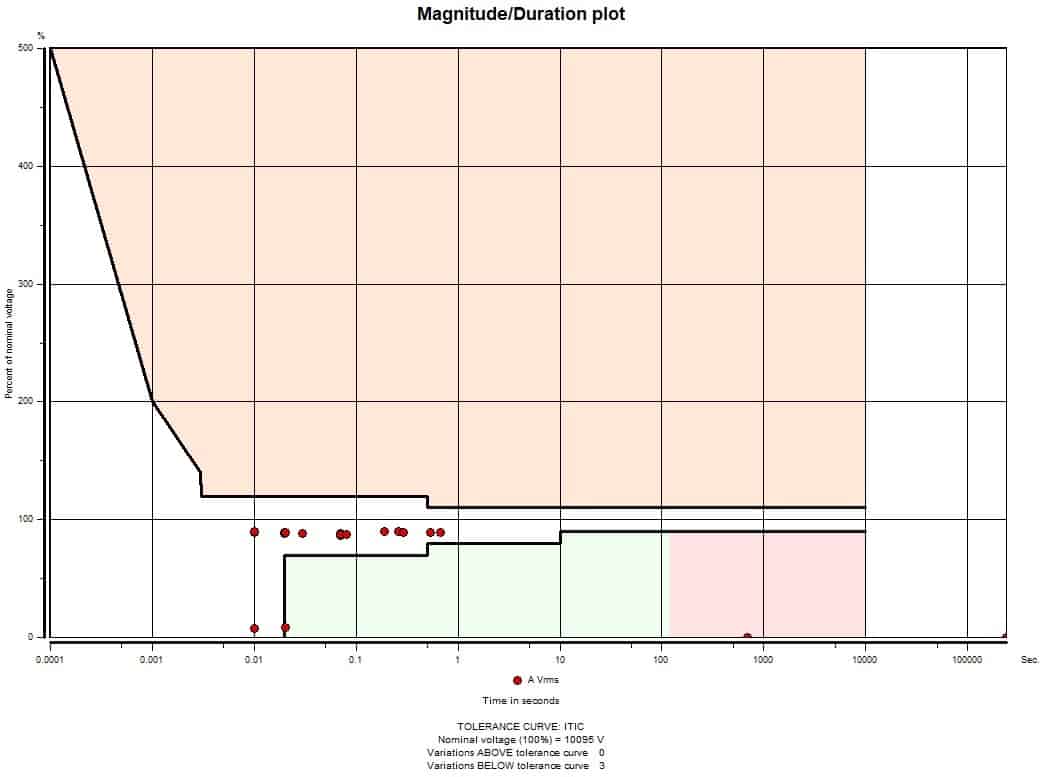Voltage Dips and Swells
What are Voltage Dips and Swells?
In essence, voltage dips and swells are short term voltage deviations that vary in severity. They are commonly referred to as “Power Surges” – regardless of if it is in fact a voltage dip. You know, that moment when the lights dim for a split second and then resume as normal. Or those times when the UPS triggers for a short moment and then stops as though nothing happened.
Whilst on the face of it they may appear to be harmless brief interruptions, at their worst they can lead to malfunction or even damage to electrical equipment. Such events may occur more than you realise and may not even be visible to the naked eye; this usually depends on how much of an effect they have on the lighting.
To summarise, whilst these are not strictly technical terms, dips and swells are the recognised terms for short duration decreases in voltage (dips) and short duration increases in voltage (swells).
What problems can Voltage Dips and Swells cause?
Aside from the noticeable light fluctuation, one of the more common issues arising from voltage dips and swells is the malfunction of IT equipment and process control equipment.
If a voltage event is severe enough, there is the very real possibility that the power supplies of critical IT equipment could reset, possibly resulting in the loss or corruption of data or possibly the failure of an entire production process. The consequences of such an event may not be immediately apparent, making it difficult to pinpoint a possible cause as the actual time of the event is unclear.
Identifying potentially problematic voltage events.
As has already been mentioned, voltage dips and swells, even potentially problematic ones, can go unnoticed. There is , however, a standardised categorisation of voltage events that is used to predict whether a given electrical environment is likely to have an adverse affect on any IT equipment connected, although specialist analytical equipment is required to capture such brief events.
Figure 1 shows a typical ITIC curve, which shows a plot of voltage event magnitude against the duration of the event.
The black lines show the boundaries within which IT equipment should be expected to operate without problems. The red dots show individual voltage events. Those events that lay either below the lower black line or above the upper black line have the potential to cause operational issues for or even potential damage to IT equipment. In this case there are a number voltage events below the bottom line, i.e. voltage dips whose duration are too long to reasonably expect IT equipment to ‘ride through’.

Figure 1: Typical ITIC curve with voltage events plotted
What solutions are available?
Solutions for voltage dips and swells tend to be one of the following: –
- Voltage conditioners
- Uninterruptible Power Supplies (UPS)
- Constant Voltage Transformers (CVT)
A voltage conditioner is an item of plant that is fitted in series with the supply that modifies many parameters of the supply; providing more than just stabilisation of the voltage levels. Additional filtering and a degree of surge protection is also offered by voltage conditioners. If it is just stabilisation of the voltage that is required, voltage conditioning may be an expensive alternative.
UPS’s, as the name suggests, provide an uninterrupted output by utilising stored battery energy during a loss of voltage. One of the characteristics of the voltage supplied by a UPS is its stability, although it is important that the correct type of UPS is chosen as some types of UPS stay on raw mains until a loss of voltage.
Constant voltage transformers exploit the properties of parallel resonant circuits to provide a constant output voltage. CVTs are very robust as they are just a magnetic circuit and they are particularly useful in challenging atmospheric conditions (dusty, hot, etc). CVTs provide a very stable voltage but do not generally provide any other voltage conditioning.
How can we help?
PureSine have the specialist equipment and experience to both identify such voltage anomalies and propose mitigation strategies to counteract such issues. Follow-up analysis can also be provided to confirm that mitigation measures have been successfully applied.
Contact Us
...
